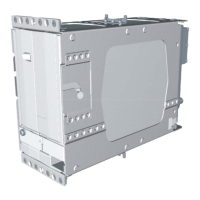190-00303-05 GIA 63 Installation Manual
Rev. Y Page 2-13
2. Electrical Characteristics
LNA Supply voltage 4.5 ± 0.5 VDC
LNA Supply Current 20 mA Maximum
LNA Operating Frequency 1575.42 ± 2.00 MHz
LNA Gain 20 dB Maximum, 12dB Minimum
LNA Noise Figure 3.0 dB Maximum
LNA Output VSWR (50 Ω) 2:1 Maximum
LNA Input power at -1 dB Gain Compression -6 dB Minimum
LNA Bandwidth
(-3 dB) 40 MHz Maximum
(-20 dB) 100 MHz Maximum
(-40 dB) 250 MHz Maximum
3. Radiation Characteristics
Polarization RHCP
Operating Frequency 1575.42 ± 2.00 MHz
Gain (on axis) 2.0 dBic Minimum
(at 160° beam width) -6.0 dBic Minimum
Cross Pole Gain (LHCP)
(on axis) -8 dBic Maximum
(at 160° beam width) -9 dBic Maximum
4. Mounting Requirements
Cable connection BNC Female
Mounting studs Four 8-32 UNC-2A studs 0.50” long
2.7 GIA 63W and GIA 63H Minimum Installation Requirements
Below is a list of required devices for TSO-C145a Class 3 or TSO-C145c Class 3 certification.
Manual Course Device
This device delivers the manual course select to the GIA 63W or GIA 63H, which is required for the VOR
receiver, and optional for the GPS receiver. Course information can come from an analog resolver, or from
the GDU PFD/MFD via Ethernet HSDB.
GDU PFD/MFD
This device displays Nav Flag, Left/Right, To/From, Glideslope Flag, and Up/Down as well as integrity
messages. In addition it provides manual course selection to the GIA, which is required for the VOR
receiver and optional for the GPS receiver.
Qualified GPS Antenna
Refer to Section 2.1.3.2 for a list of approved antennas.

